Refit year 7
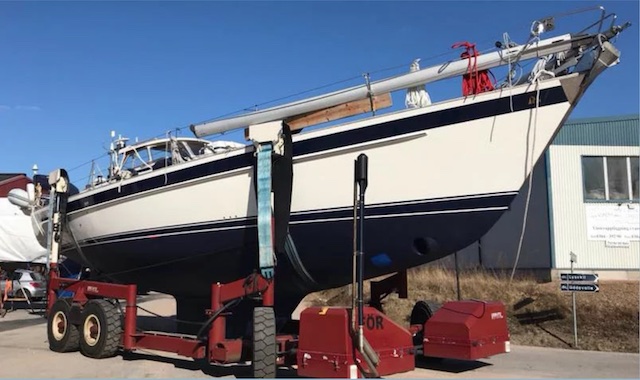
Improvements for 2019
Each year, I keep promising myself to at least try to limit new investments. However, it seems that I have a never ending stream of ideas to further improve safety, comfort and style onboard Regina Laska.
So, here are some of the major news for 2019, which I hope you will enjoy if you are joining in the years to come. Obviously, further to these, there are annual maintenance and safety checks as well as service jobs I don't bother to mention, such as engine checks, annual service of all safety equipment, e.g. life raft, life wests etc. Below, just find the major new improvements for next year you would possibly notice onboard.
New radar
After 6 more or less constant use of the radar, it was time to change the Magnetron. This is a standard job that needs to be done regularly on a conventional radar. You notice that it is time for a change of the Magnetron when the radar picture is beginning to fade and you can't get a picture as clear as you used to, not even when increasing the gain to max.
Normally, the Magnetron is exchanged and you continue as usual. After all, I am highly content with my Furuno Radar. To my experience, there is company producing such great radars as Furuno. So why change?

My current Furuno DRS4 Radar on Regina Laska that needed to change re Magnetron.
When I approached Furuno for changing the Magnetron, it was like when my friend went to his Mercedes dealer to replace the braking light but, instead, came home with a brand new Mercedes... Of course, my friends at Furuno could not refrain to mention that there is a new Furuno Radar on the market with a completely new technology.
This new solid state radar has no magnetron at all, uses the Doppler effect to distinguish dangerous moving objects on collision course and is called NXT for "next". Well, a good name, I thought, as my next radar. When it comes to new technology, I can't refrain from being very, very tempted. So, instead of changing the Magnetron, we agreed to change the entire Radar.

Check their video here. I am really interested to compare the difference between a conventional radar and this new generation solid state radar with target analyser with doppler function, fast tracking function, "RezBoost" feature to get down to a Horizontal beam width to stunning 2°, as well as enhanced rain clutter feature.
The new radar fits snug on my old brackets and I can even keep my existing radar cable and can through out my old power supply, since this new radar has a built in power supply. For more information from Furuno, see here.
New third autopilot
What I said above is true regarding Radars. Furuno is simply producing the best radars available. However, when it comes to Autopilots, I have another opinion. Here, Raymarine is the state of the art for sailing vessels, at least at the time of writing. I had Raymarine pilots on my HR29, my HR31 and my HR40 with outstanding results already back in 2002, with my ST7001 and the 400G computer including the rate gyro and AST ("Advanced Steering Technology").
Regina Laska today has two Furuno pilots controlling three drive unites, of which one is a Whitlock drive on the rod steering and two are linear drive units working in tandem directly on the quadrant. New for 2019 is a third autopilot from Raymarine, this time even better than the old Raymarine on my HR40.
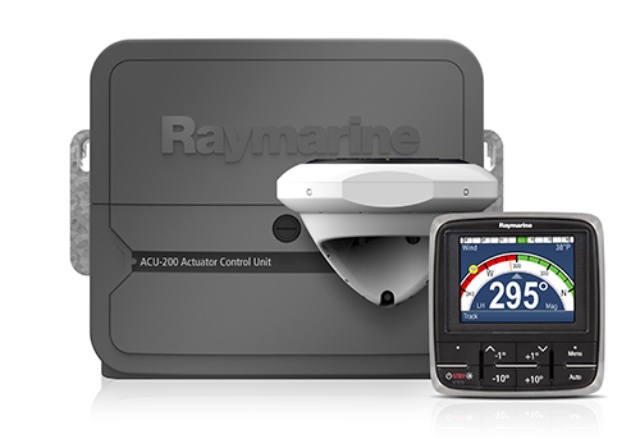
The new Raymarine Pilot is the new Evolution pilot, consisting of the ACU400 control unit, the p70s display unit and, most importantly, the thrilling EV-1 sensor unit. It's the Ev-1 I am most interested in, along with the soft start and stop function of the ACU400.
 The EV-1 is a precision monitoring sensor, giving information of heading, pitch, roll, and yaw, allowing the autopilot to evolve instantly as sea conditions and vessel dynamics change. In other words, the boat will give counter-rudder even before a change of heading has even been noticed.
The EV-1 is a precision monitoring sensor, giving information of heading, pitch, roll, and yaw, allowing the autopilot to evolve instantly as sea conditions and vessel dynamics change. In other words, the boat will give counter-rudder even before a change of heading has even been noticed.
It steers like an experienced helmsmen, who can feel the motions of the boat long before it changes heading direction. The sensor consists of a 3-axis digital accelerometer, 3-axis digital compass plus 3-axis gyro digital angular rate sensor.
That's a lot of technical stuff to solve one single problem an experienced human being does by intuition: to steer a rolling and heeling sailing boat straight on, using a minimum of rudder movements and electrical power. For more information by Raymarine, see here.
You might understand that I am really looking forward to test this new piece of equipment! By having two Furuno pilots plus one by Raymarine, controlling my three drive units, we can test the pilots side-by-side, compare software versions and drive unit behaviour.
This is going to become a very interesting summer, to say the least!
If you buy one for yourself, give my regards to Duncan!
New second EPIRB
Following the stringent rules for Area-1 offshore sailing is not enough for Regina Laska's safety standard. For 2019 I have decided to exchange several of my electronic distress signals, just because the new ones are of a more modern design and/or have more features.
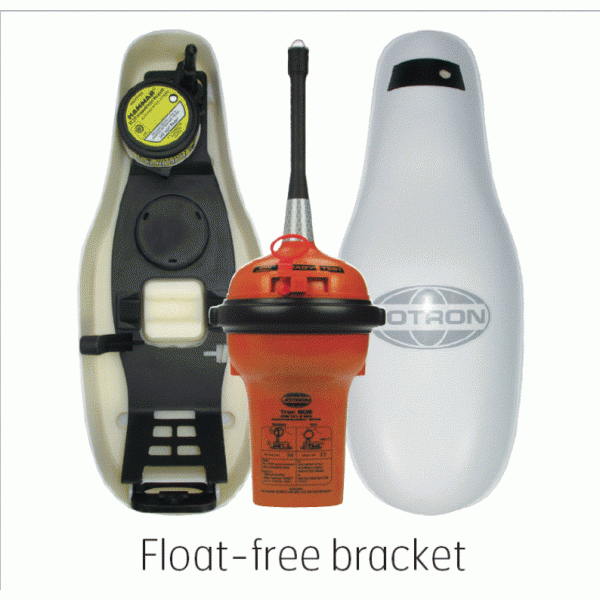
The TRON60GPS in its float free cradle with Hammar hydrostatic release unit (in yellow)
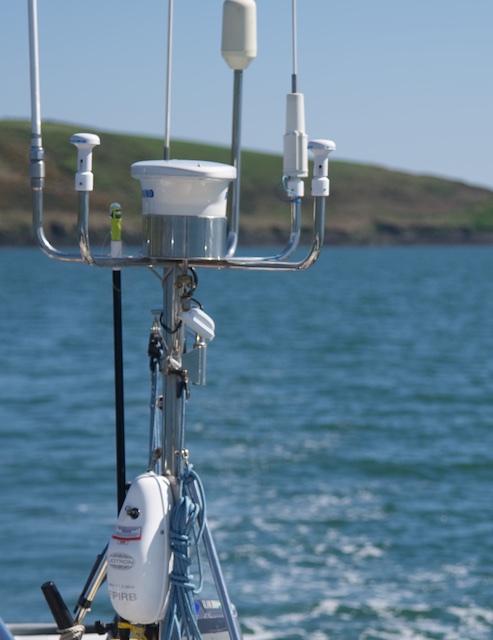
The TRON 60GPS in its cradle with Hammar hydrostatic release unit on the antenna mast in the stern.
Two years ago, I replaced my TRON 40 GPS SOLAS EPIRB with the automatic H20 Hydrostatic Release Unit with the new TRON 60 GPS SOLAS EPIRB in a new type of cradle.
I like this EPIRB so much, that I will now also replace my second EPIRB placed in my grab bag with the same. My old second EPIRB in the grab bag was a TRON 45S and this new one will have the feature of having a built in GPS.
I will thus have two identical EPIRB's onboard, one on the antenna pole with automatic release unit and one in the grab bag.
New AIS SART
My old Search and Rescue Transponder (SART) stowed in the grab bag for the life raft is a device giving an emergency distress signals on radar screens of all boats running and watching their radars in vicinity.
With literally all boats running ECDIS or plotters receiving AIS signals these days, it is time to replace the SART for radars with the new type of AIS SART triggering an emergency signal on all boats receiving AIS information.
The built-in GPS will give the exact position on the plotters and ECDIS' finding the boat or the life-raft in distress more quickly and accurately.

Regina Laska's AIS SART by Jotron is Wheelmarked for SOLAS vessels complying to GMDSS.
If you wish to be seen in a life raft, the AIS SART is a very valuable piece of equipment.
New SOLAS Handheld VHF
My old TRON VHF has been a reliable piece of safety equipment. It has been with me on several boats for over 15 years and it is now time to replace this somewhat bulky emergency VHF with a modern, waterproof SOLAS approved GMDSS emergency VHF: the new TRON30 VHF.
Dormant as it has been in it's grab-bag, my old VHF has been tested every year, the NiMH-Batteries have been charged and Li-Emergency batteries have been replaced every 4 years readily available in the grab-bag to send a distress signal if ever needed.
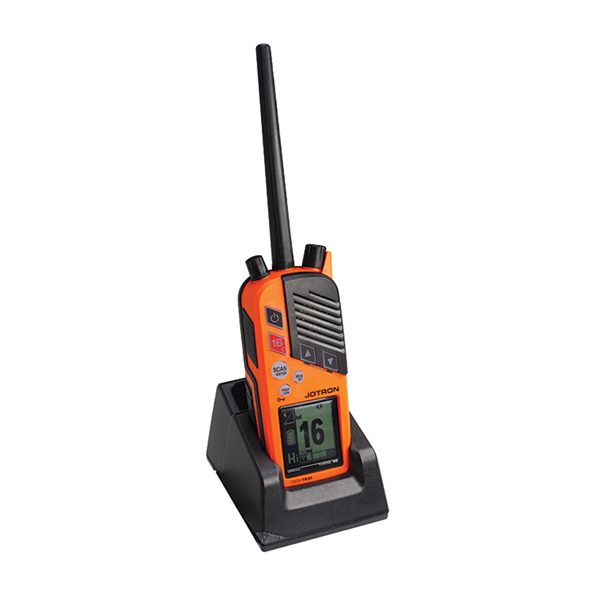
The TRON30 VHF GMDSS in its charging cradle.
The new TRON30 VHF is floating, fully waterproof, GMDSS approved and has excellent microphone noise cancelling for noisy environment (e.g. during helicopter rescue).
A VHF is just one of the simplest and most reliable two-way emergency transmitting devices around for short distance communication. Therefore, Regina Laska carries no less than 4 VHFs (fixed Furuno with three working stations, ICOM M25 waterproof and floating, 1 TRON20 non GMDSS, and now new: TRON30 GMDSS).
New additional LITE+ lifejackets
The problem with Lifejackets is that they are not always worn in warm sunshine, when shorts and T-shirts are predominant. However, the water is often still cold! A cold-water-shock during the first minute or two is a major problem whenever the water temperature is 20 deg C or below, which fatal statistic shows.
With a water temperature of 15 deg C, this can certainly become life threatening. And hand-on-heart: Who is wearing a heavy lifejacket on a sunny warm day with little wind and no seas, irrespectively of the water temperature? Sailing in Galicia, for instance, which is on the plan again for 2019, is a typical example: Warm weather and an Atlantic water temperature around 15-16 degC.

Playing around in an out-of-service lifejacket that didn't pass the stringent annual tests that all Regina Laska's lifejackets have to undergo. Here in the Atlantic sea of Galicia on a warm, calm day.
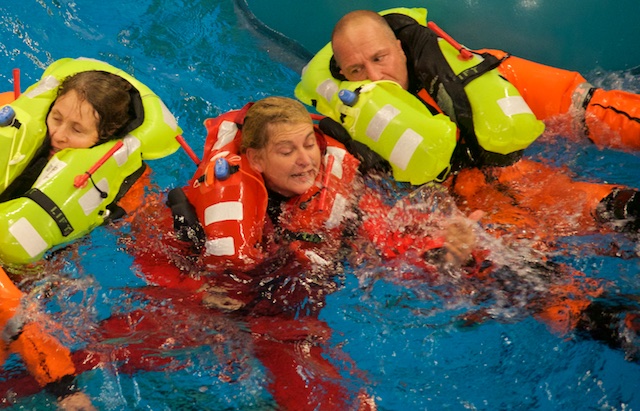
Lifejacket training on the Reginasailing sea survival training course in Bremerhaven.
Looking at statistics of drowned people in Canada (n=772) between 1991 and 2000, a whopping 81% had no lifejacket or a malfunctioning lifejacket. Other statistic even say that 97% of all people that drown do not wear a lifejacket and that 80% drown during the first 2 minutes (due to the bespoke cold water shock). Swedish statistics from 2012 shows that 87% of all drowned did not wear a lifejacket (and, by the way, that 95% were men, 60% were alone onboard and 52% had drunken alcohol).
I usually joke and say that sailors should wear their lifejackets, bring their wives and drink in port to improve survival statistics!
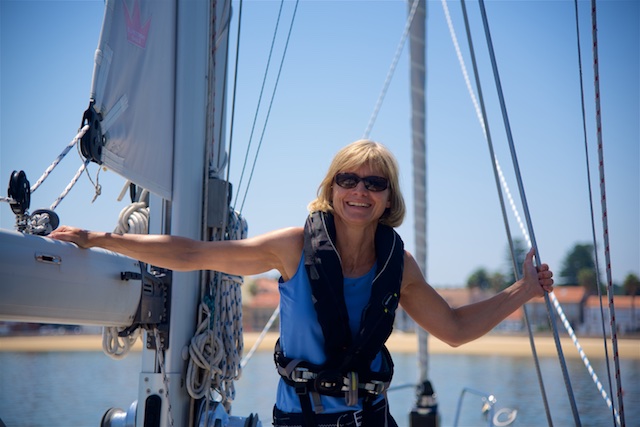
My Spinlock 5D are great for offshore sailing. But when in Galicia, like here on one of my "all-women" sail training legs in 2017, they tend to feel a bit bulky on top of a thin T-shirt and shorts. Yet, I wish my guests always to wear a life west!
For this reason, my 9 heavy offshore Spinlock D5 lifejackets, containing all thinkable safety equipment ranging from three LED lights, a spray cap and and AIS Personal Location Beacon (PLB), will from 2019 be accompanied by 4 additional Spinlock LITE+ life jackets.
This means no less than 13 approved lifejackets will be available on Regina Laska - all annually inspected and serviced by an approved service station.
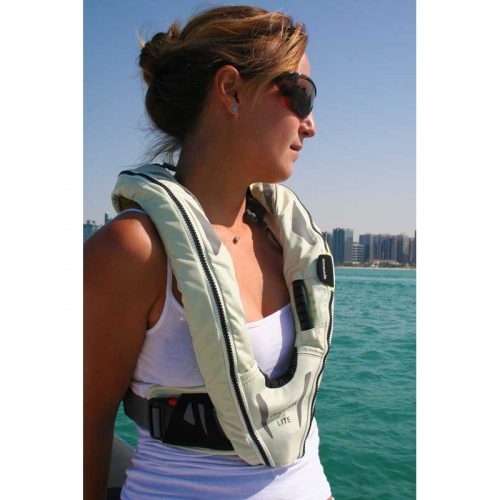
The Spinlock LITE without the fitting for the harness. Regina Laska will have the LITE+ version including the harness for safety reasons.
These LITE+ contain the minimum of heavy extras and are to be worn when one normally would not want to wear a lifejacket at all. The idea is that there will always be worn lifejackets with maximum comfort.
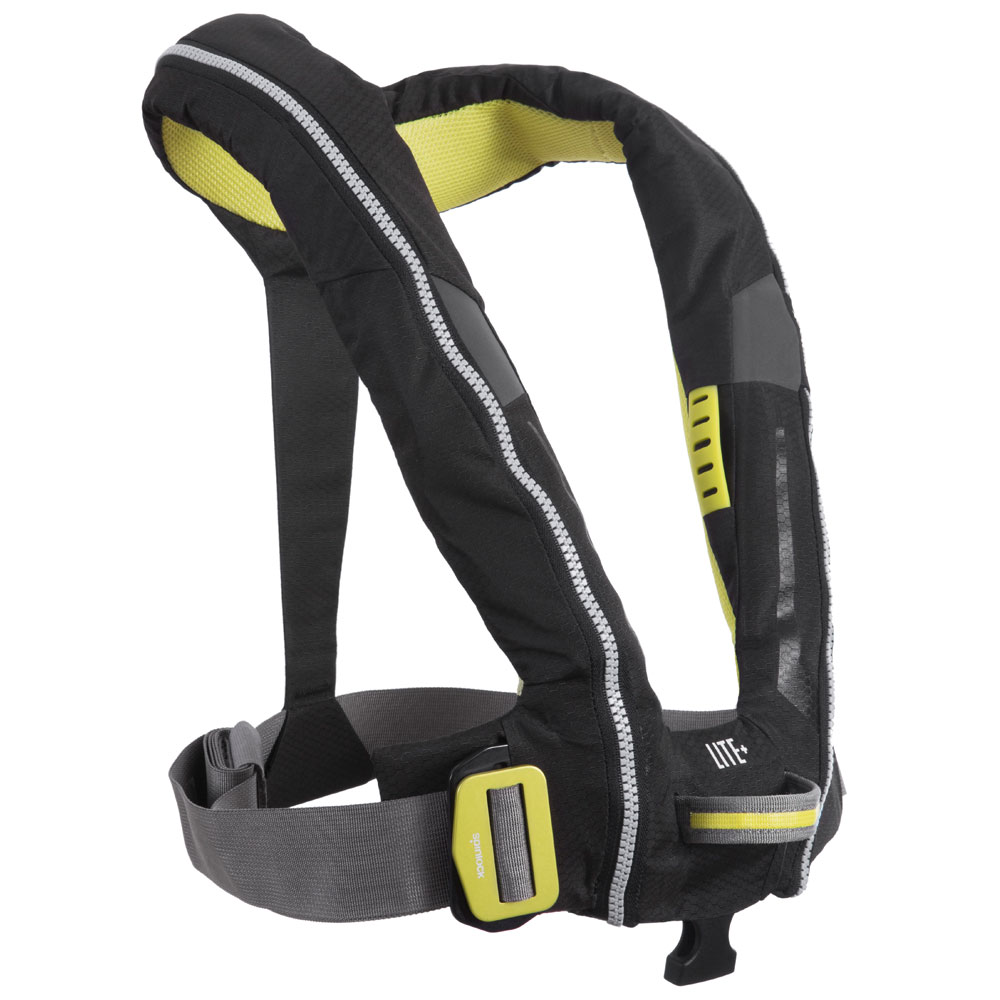
The Spinlock LITE+ with the fitting for the harness on the front.
During normal RYA sail training or under offshore conditions or when we are wearing heavy foul-weather gear anyway, the Spinlock 5D (offered in three different sizes on Regina Laska) will still be worn, just as usual. The new one-size-fit-all Spinlock LITE+ wests are intended for times, when it previously has been very hard to convince the crew to wear a lifejacket, especially in totally flat seas and warm weather.
The new Spinlock LITE+ are feather light to wear and are highly comfortable. With their 170N buoyancy, they weigh no more than a mere 860 gr, including harness. Cool, he?!
All lifejackets now equipped with MOB Lifesavers
Wearing a lifejacket and surviving a Man Overboard (MOB) is a good start.
The remaining crew onboard then needs to be able to stop the boat, heavy-to, litter the place with floating safety gear and markers, press the MOB-button and the DSC- button, furl up the genoa, start the engine, return back to the casualty the correct way, tack back and lay alongside with the casualty midship and bow pointing upwind. This is all taught during the RYA Sail Training Legs, where we try out various MOB drills.
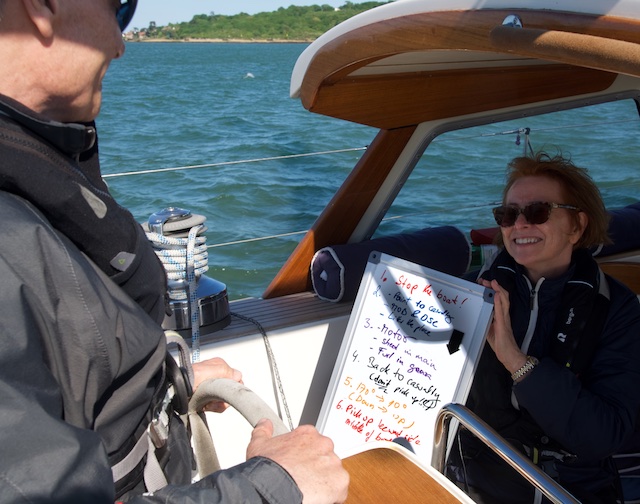
Inger-Johanne from Norway showing her husband the notes for the MOB manoeuvre during Williams Yachtmaster Prep Course on Regina Laska.
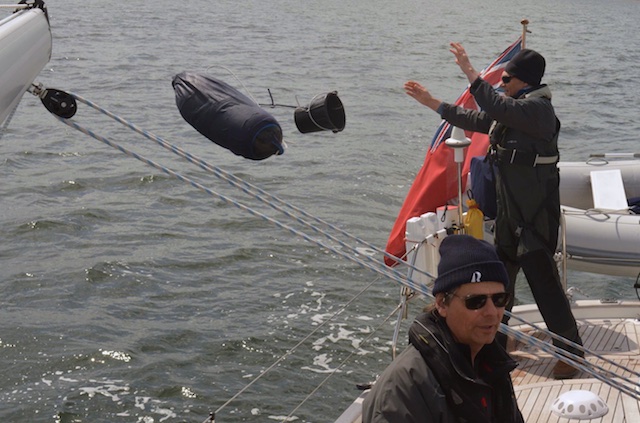
Using a fender with a bucket during a MOB drill onboard Regina Laska.
So far so good, but how to lift the casualty onboard? There are several methods, one including lifting the casualty by means of the halyard, optionally connected to an electrical winch, as on Regina Laska.
But have you thought about the problem how to fit the halyard onto the lifting strap on the lifejacket? Were you planning to reach down to the MOB in the water?

Imagine this scenario on a more modern lager boat with high freeboards or in a swell on open seas....
Here, this new MOB Lifesaver comes in, invented by my felly Yachtmaster Instructor, Hallberg-Rassy 352 sailor and author Duncan Wells. It is so simple and could easily be made by yourself out of a string of floating spectra rope, if you like. I chose to support Duncan and bought 13 of them from his webpage for GBP 21.90 each to be installed on all my life jackets.
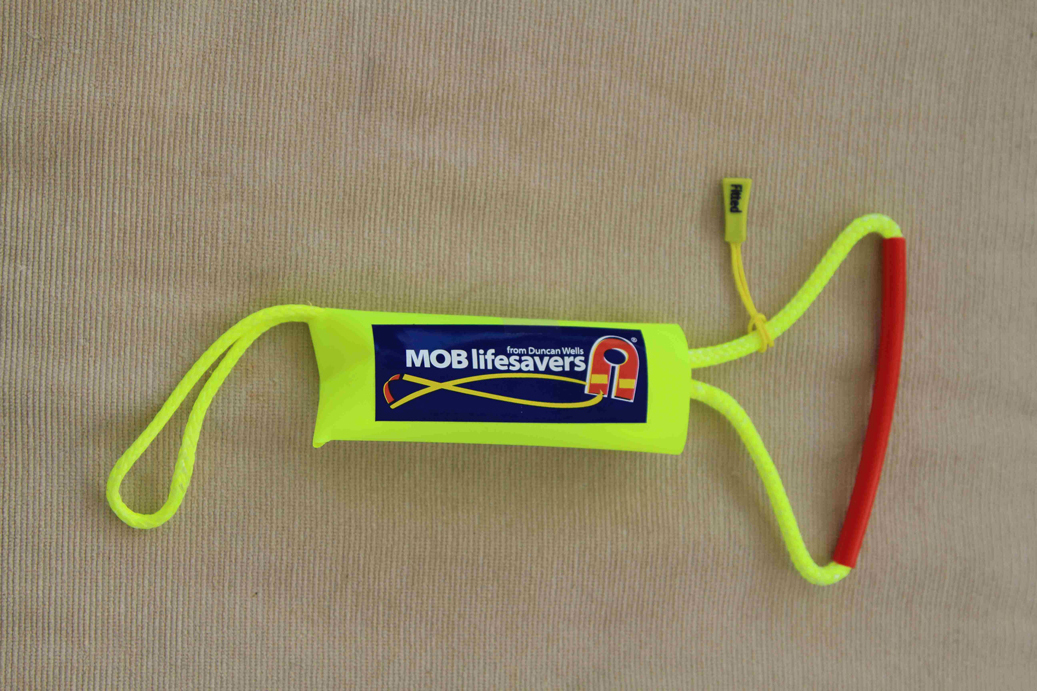
The little MOB Lifesavers as it comes
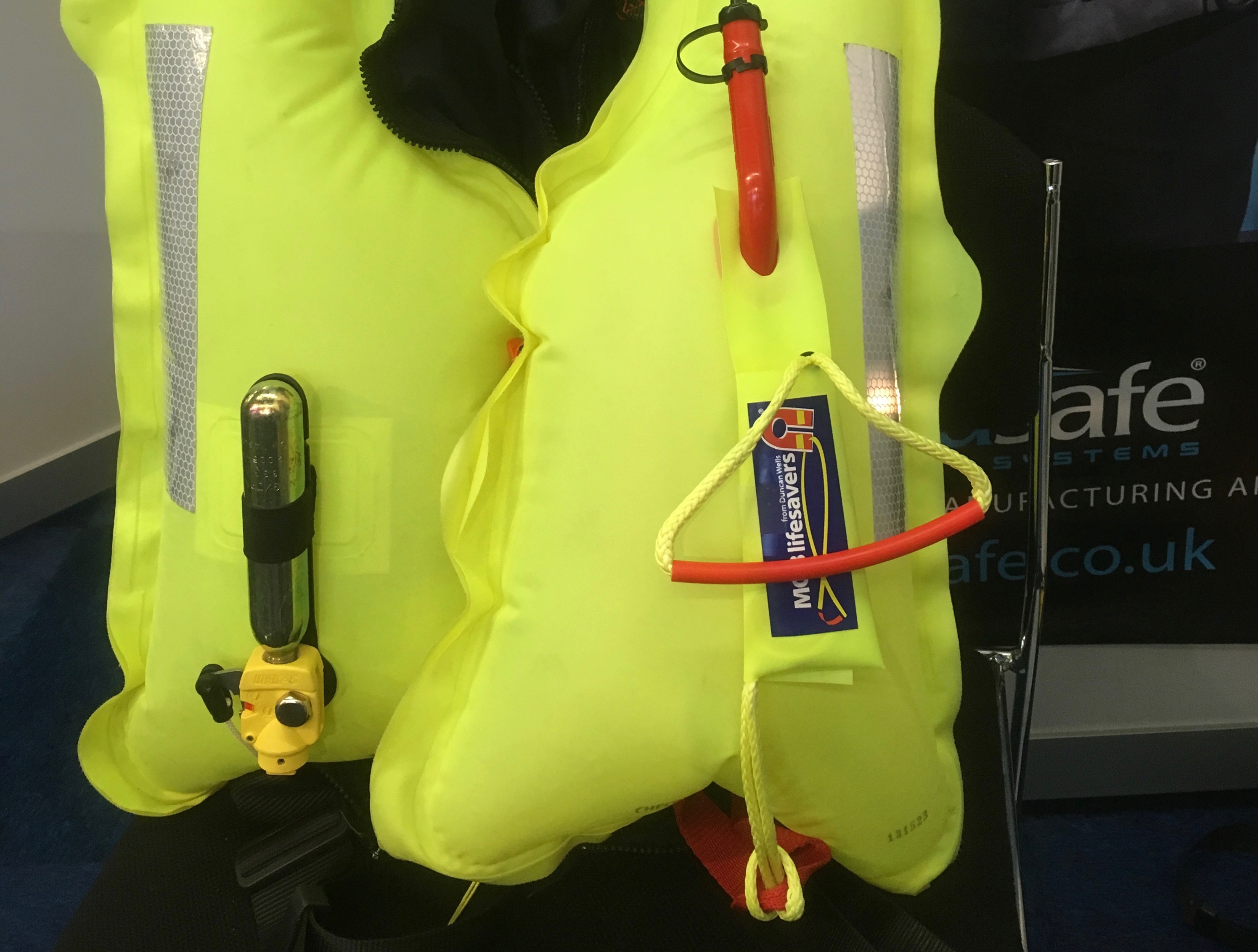
The MOB Lifesavers installed on a life jacket.

The MOB Lifesaver attached to the lifting strap of the lifejacket.
The MOB Lifesaver is folded into the bladder of all lifejackets (i.e. also the new LITE+). When you have the MOB lying next to the boat, you have the ability to "fish up" the spectra line by means of a boat hook.
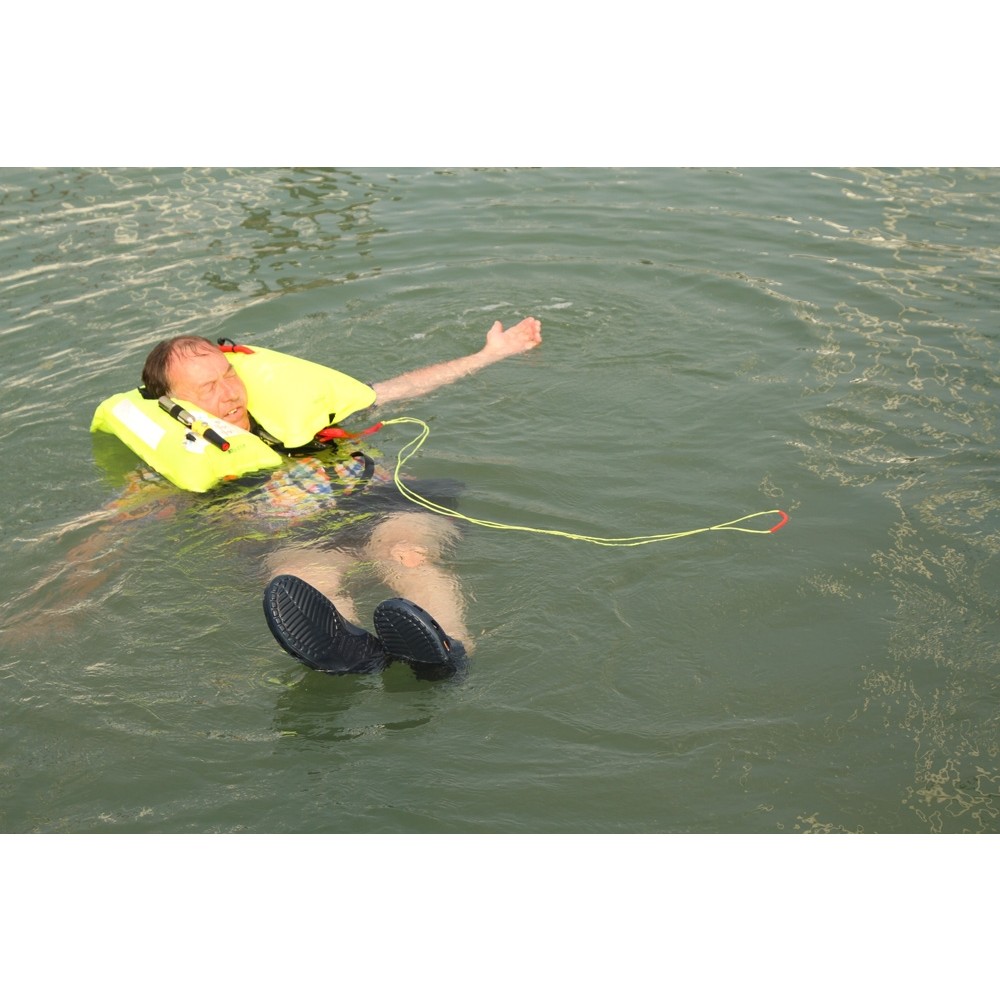
The spectra rope comes out of the bladder of the lifejacket, floats and has an open eye for the boat hook.
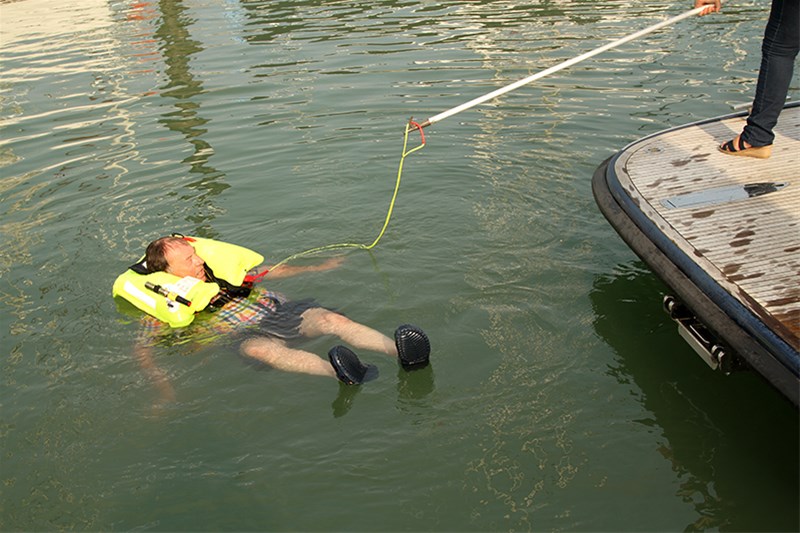
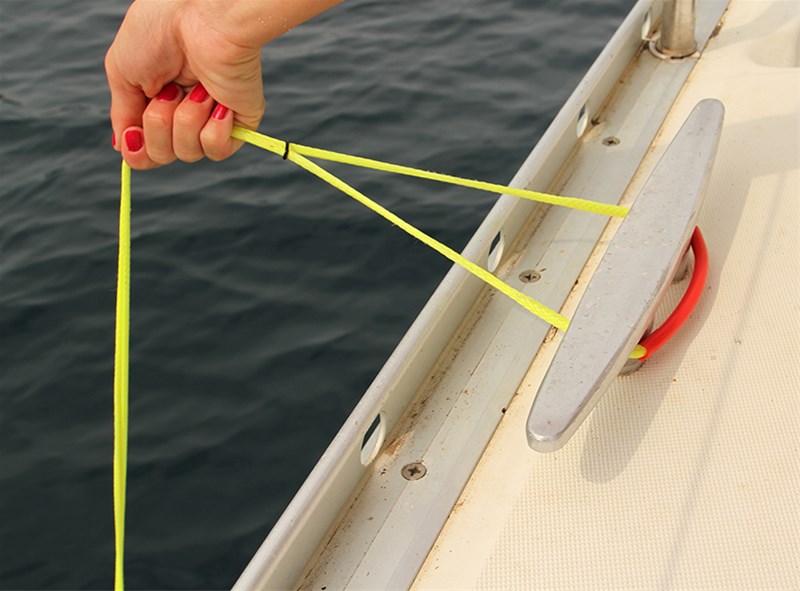
Attach the MOB alongside not to "loose" him or her again while you prepare your halyard.
You fix the eye on the end to your halyard and have a direct connection between the MOB and the boat's lifting device.
This is so much easier than trying to hook the halyard onto the lifejacket! The MOB Lifesaver should be added on every lifejacket, I think.
New "Magic Reboard" Safety Ladder
Regina Laska has a rigid safety ladder fulfilling the new ISO standard No 15085:2003 FDAM 2:2017. This new rule, valid for all new boats, is based on the EU-Directive saying that a person, who has fallen overboard must be able to get back into the boat unaided.
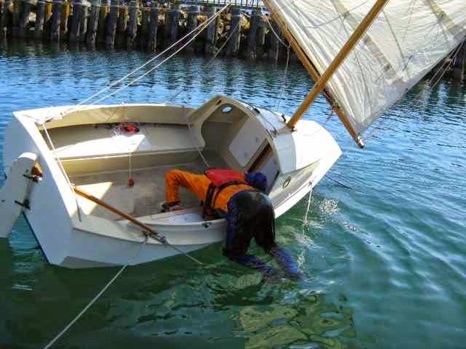
For more information on the ISO rule, see here.
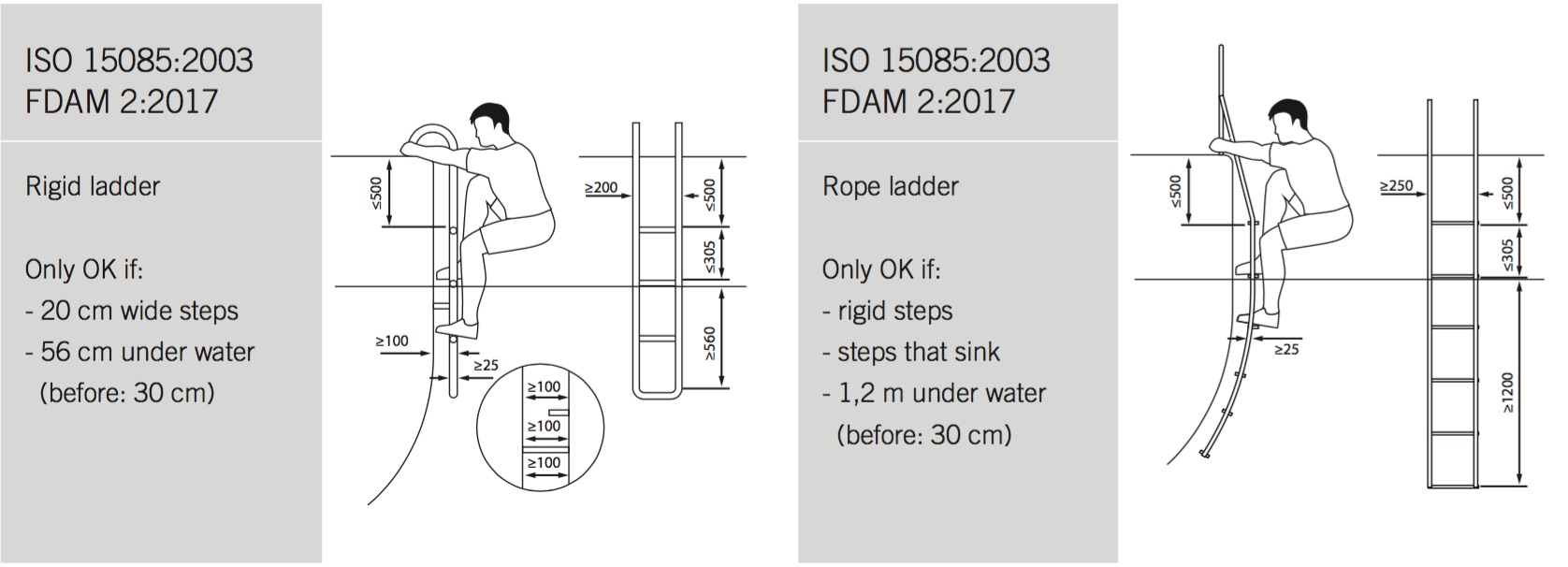
Checking out my soft rope ladder, however, I noticed that it does not! It was too narrow, too short and the steps did float. Even when I prolonged the mid-ship ladder solution by hanging it onto my midship ladder, the outcome was very mediocre, to say the least!
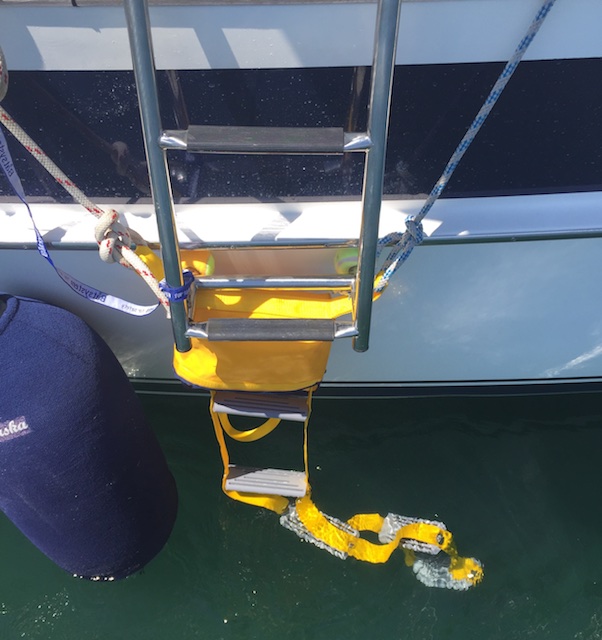
My old soft ladder for the side: Too narrow, floating steps and too short, even when hanging under my rigid side ladder! Time for a change.
I was checking the market for a good soft side ladder that was deployable from the water which one also could have installed fixed on the pushpit if requested. From 2019 I will have the "Magic Reboard" ladder by Outils-Oceans. Please note that there are two models and only the ESR27350 has rigid steps and fulfils the ISO-standard.
New larger 12V auxiliary battery
New power supervision of LiFe batteries
New washing machine
New, improved Magma BBQ
If possible: New larger 40kg Rocna anchor
New lighting in forward head cupboard
New Båtsystem lamps in salon and aft cabin
Continuing of great NanoExtract polish
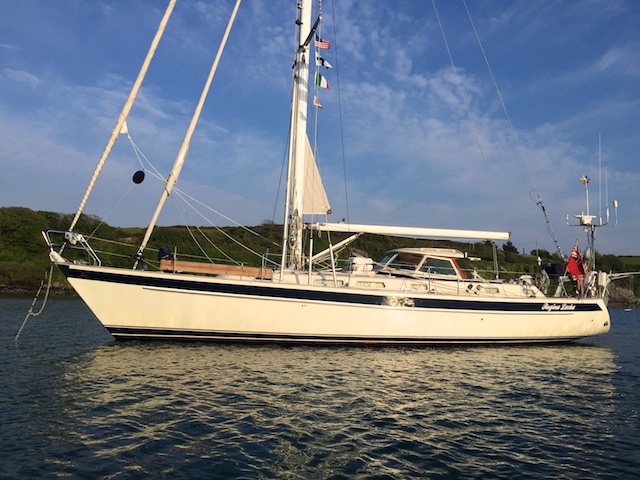
Continuing success with SeaPilot for my guests
